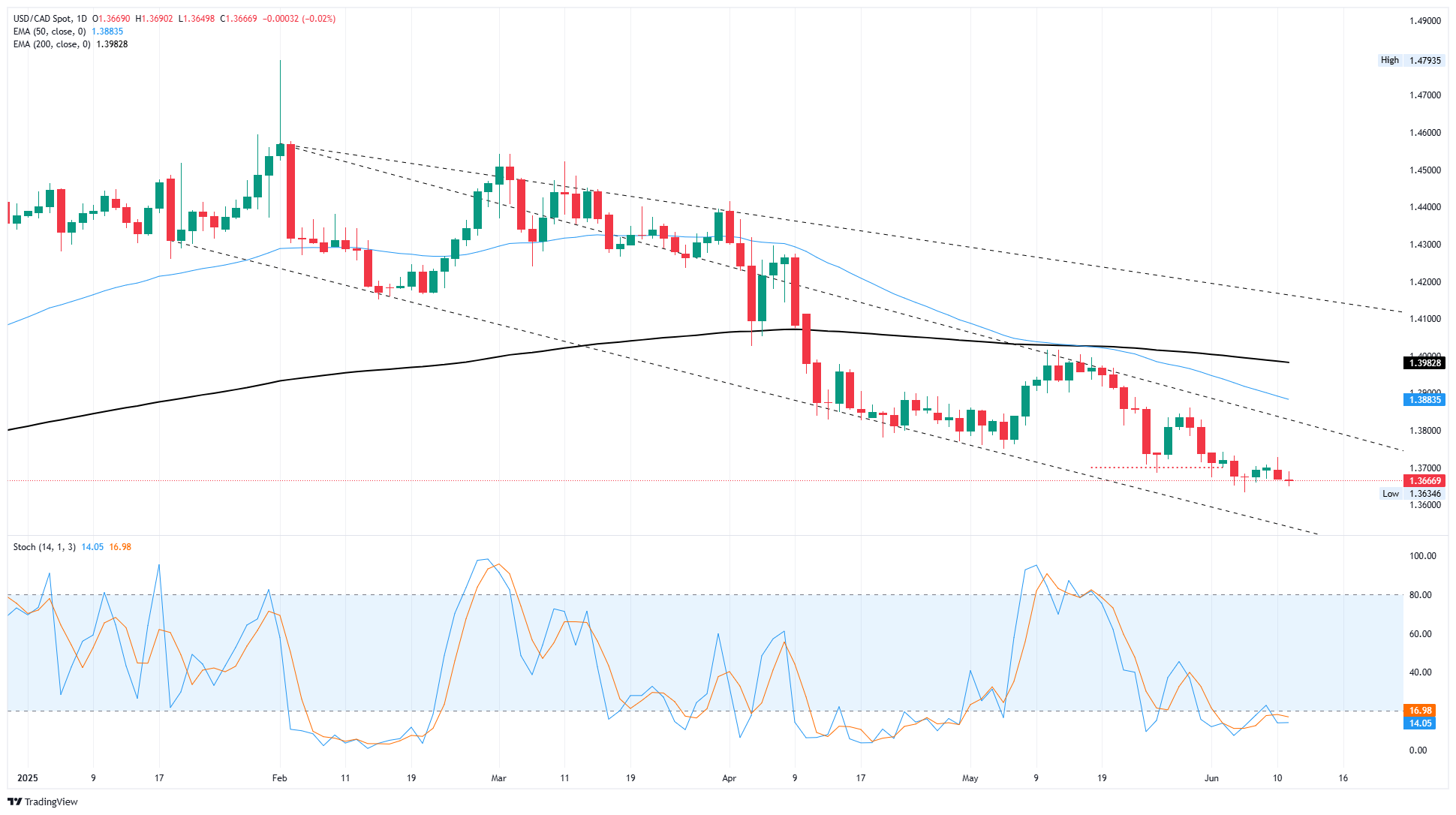Canadian Dollar holds steady amid Greenback weakness
- The Canadian Dollar continues to stick close to eight-month highs against the US Dollar.
- Trade headlines and US CPI inflation data dominate market attention on Wednesday.
- More US inflation data and consumer sentiment figures due later this week.
The Canadian Dollar (CAD) is holding close to multi-month highs against the US Dollar (USD) on Wednesday. The Loonie caught a thin boost from declining Greenback bids, with broad-market investor sentiment bolstered by a cooler-than-expected US Consumer Price Index (CPI). US-China trade talks also wrapped up in London during the overnight session, giving investors hope that trade war rhetoric will continue to cool and pave the way to breaking down the Trump administration’s eye-watering import taxes and tech export restrictions.
Canadian economic data remains largely absent from the economic data docket this week. The trend will be continuing through most of the month as datasets catch a lull. The next batch of Canadian CPI inflation figures is slated to be released at the tail end of the month, on June 24.
Daily digest market movers: Canadian Dollar firms up on Greenback weakness
The Canadian Dollar mostly held flat against the US Dollar on Wednesday, keeping the USD/CAD pair on the defensive below 1.3700.
- US CPI figures broadly came in below expectations, bolstering market bets of a September Federal Reserve (Fed) rate cut.
- According to the CME’s FedWatch Tool, rate traders are pricing in nearly 70% odds of at least a quarter-point trim to the Fed’s main reference rate on September 17.
- Headline US CPI inflation rose less than expected in May, ticking up to 2.4% YoY. Core CPI inflation held flat at 2.8% YoY.
- US Producer Price Index (PPI) inflation figures are up next on Thursday, also expected to hold flat at 3.1% YoY.
- Tariff inflation impacts, if they are coming, will likely appear in business-level inflation metrics first.
Canadian Dollar price forecast
The Canadian Dollar remains stable, situated near its eight-month highs in relation to the US Dollar. The recent depreciation of the US Dollar, coupled with the decision to maintain interest rates by the Bank of Canada, has sustained the USD/CAD pair below the 1.3700 threshold.
Since the peaks observed in February, there has been a persistent downward trajectory. Nevertheless, technical oscillators are decidedly in oversold territory. Although this rebound may lack sufficient strength to alter the overarching trend, it could signify an imminent exhaustion pullback.
USD/CAD daily chart

Canadian Dollar FAQs
The key factors driving the Canadian Dollar (CAD) are the level of interest rates set by the Bank of Canada (BoC), the price of Oil, Canada’s largest export, the health of its economy, inflation and the Trade Balance, which is the difference between the value of Canada’s exports versus its imports. Other factors include market sentiment – whether investors are taking on more risky assets (risk-on) or seeking safe-havens (risk-off) – with risk-on being CAD-positive. As its largest trading partner, the health of the US economy is also a key factor influencing the Canadian Dollar.
The Bank of Canada (BoC) has a significant influence on the Canadian Dollar by setting the level of interest rates that banks can lend to one another. This influences the level of interest rates for everyone. The main goal of the BoC is to maintain inflation at 1-3% by adjusting interest rates up or down. Relatively higher interest rates tend to be positive for the CAD. The Bank of Canada can also use quantitative easing and tightening to influence credit conditions, with the former CAD-negative and the latter CAD-positive.
The price of Oil is a key factor impacting the value of the Canadian Dollar. Petroleum is Canada’s biggest export, so Oil price tends to have an immediate impact on the CAD value. Generally, if Oil price rises CAD also goes up, as aggregate demand for the currency increases. The opposite is the case if the price of Oil falls. Higher Oil prices also tend to result in a greater likelihood of a positive Trade Balance, which is also supportive of the CAD.
While inflation had always traditionally been thought of as a negative factor for a currency since it lowers the value of money, the opposite has actually been the case in modern times with the relaxation of cross-border capital controls. Higher inflation tends to lead central banks to put up interest rates which attracts more capital inflows from global investors seeking a lucrative place to keep their money. This increases demand for the local currency, which in Canada’s case is the Canadian Dollar.
Macroeconomic data releases gauge the health of the economy and can have an impact on the Canadian Dollar. Indicators such as GDP, Manufacturing and Services PMIs, employment, and consumer sentiment surveys can all influence the direction of the CAD. A strong economy is good for the Canadian Dollar. Not only does it attract more foreign investment but it may encourage the Bank of Canada to put up interest rates, leading to a stronger currency. If economic data is weak, however, the CAD is likely to fall.

